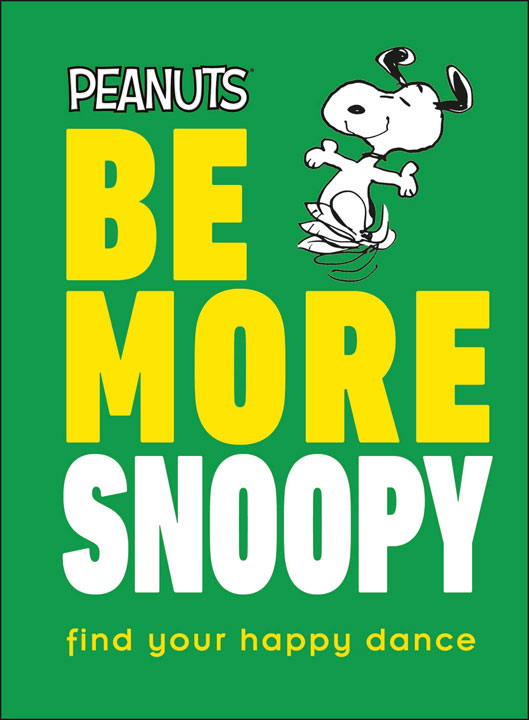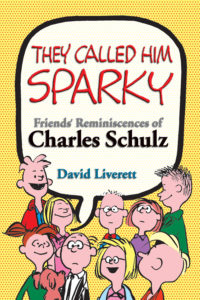Review: Charlie Brown’s America
- By : Nat
- Category : New releases, Reviews

I’ve been looking forward to Charlie Brown’s America: The Popular Politics of Peanuts for a while now, and while Blake Scott Ball’s look at how Peanuts both reflected and impacted the political and social issues of its day. While the book does not fulfill every hope that I had for it (for I am capable of big hopes), I think it’s a worthwhile addition to Peanuts scholarship and worth reading… and judging by the reaction it is getting in some fairly mainstream outlets, I am not alone in feeling that.
The book has seven chapters, best described by their subheads: “The Making of an American Original”, “The Cold War Origins of Peanuts”, “Franklin, Color-Blindness, and the Limits of Racial Integration”, “Ambivalence, Empathy, and Peanuts’ Vietnam War”, “Peanuts, Nature, and an Environmental Ethos”, and “Gender Roles, Abortion Rights, Sex Education, and Peanuts in the Age of the Women’s Movement”. For each of these (but the first chapter, which is a more basic history of Schulz and the strip), the book tries to balance out what the strip said, what Schulz meant, how the readers interpreted it, how society at the time saw the relevant issue, and a more modern perspective on it. He depicts Schulz as often taking either a middle of the road stance that may not stand up to strict scrutiny, or him making an intentionally ambiguous strip that can be seen as supporting either of two conflicting positions. While Schulz definitely did take positions and used the strip at time to portray things, I don’t think Ball gives enough room for the possibility that sometimes he might have been trying to do nothing more than reflect some goofy aspect to the side of the issue. Sometimes, people don’t allow that a comedian might be just being funny.
Of this chapters, the strongest is the Vietnam one. Ball speaks very well to how the World War I Flying Ace is a reflection of an emotional reaction to the Vietnam war, to the soldiers who found themselves in that quagmire situation. He steps well through the basic history of the public’s understanding of our involvement in that fight, and the changes we see in the Flying Ace strips over that time.
Other chapters are strong and rich in their coverage, but still miss opportunities. The chapter on Franklin does a good job on the immediate reaction to the character, how some people felt seen in it, and how Schulz was cautious and perhaps overcautious in his handling thereof. But in the end, Ball seems to evaluate the success of the introduction in Franklin on the basis of whether he became a major character in the strip, which seems a bit like evaluating Jackie Robinson’s entry in to Major League Baseball on his batting average (.313, quite good indeed) rather than on whether his presence helped bring about the end of segregation in baseball (yes.) Did Franklin’s presence open the way to more diversity to other strips? I don’t know, but I’d like to read that.
The chapter on the environment covers not just the use of Peanuts in certain environmental campaigns, but also in the booklet The American Economic System and Your Place In It, a controversial publication that I dedicated an episode of my podcast to. Blake does a good job of showing how both efforts were essentially pro-corporate, with things like the Arbor Day special and the “Charlie Brown Clears the Air” educational film making the focus of the environmental message on personal responsibility… which, as he correctly notes, was a focus promoted by corporate interests to keep people from paying attention to the massive environmental damage done by industry. (But, to be fair, a TV cartoon is probably a good place to tell people not to littler but an ineffective one to tell Megacorp to cease producing destructive waste.)
Ball does fall prey to the temptation to attribute intent to Schulz based on an interpretation of a strip (we do have record of Schulz stating intentions for some strips, but far from all) or a quote. The most frustrating example of this is in the feminism section, where Ball tries to claim an inconsistency on Schulz’s part. He starts with a series of strips where Peppermint Patty is rebelling against being forced to wear a dress to school, and has ultimate victory with being allowed to return to her simple, comfortable gear. Ball says “Where Schulz supported Peppermint Patty’s desire to dress as she pleased, he did not seem to have exactly the same attitude in personal life” and brings in this 1967 Schulz quote:
I don’t see anything wrong with miniskirts. If a girl can wear one well, then I think it looks very nice. I am all for experimental changes in fashion if they make a person have a nice appearance.
He uses that to claim that “Schulz was commenting on women’s fashion as something for male pleasure, to be judged by men like himself.” This is missing both the meaning and the context of the first sentence. In 1967, miniskirts were a new and controversial phenomenon, with some saying that this sort of immodest dress was something women should not be allowed to wear publicly (a belief that still holds in places, as the Ugandan legislature passed a miniskirt ban just a few years back.) This interview ran in the Christian Herald, an Evangelical publication which likely had socially conservative readers. In that context, saying “I don’t see anything wrong with miniskirts” is very much like telling Peppermint Patty’s school “I don’t see anything wrong with shorts and sandals.” And his statement that he likes changes in fashion that make a person have a nice appearance is utterly ungendered. Judging by every photo I can think of of Sparky, he tried to have “a nice appearance” himself.
He also repeatedly used MetLife dropping their Peanuts license as a sign that Schulz’s work had slipped in its import to the public, without mentioning why MetLife dropped them: they were in the midst of spinning off their consumer insurance business, which was what the Peanuts license was primarily meant to address.
But that’s me being picky.And one of my weaknesses as a reviewer is that I’m better at voicing my disagreements than a work than what I liked, so let me point to one more of the things that I liked. The time Ball spent with the correspondence files at the Schulz Museum and Reference Center gets some good specific reaction from the reading public to individual strips, including notes on what seems to be a fairly long letter from then-Governor Ronald Reagan on his struggles over abortion legislation. In a way, all of these letters reflect how connected the public felt to Schulz through Peanuts… even if the Schulz they felt connected to was often more their assumptions about him than the specific man he was.
The book is definitely worthwhile. It isn’t, however, something that seems to be the definitive final word. It’s not like A Charlie Brown Religion, which did a good job of leaving me thinking “well, that covers it, we really don’t need anything more in-depth on Schulz and religion”. The topic Ball targeted is so big that religion is a subset, and even in the form he handled that subtopic there could have been a few more items covered (such as the strip series at the end times-preaching summer camp.) He tended to focus on things where there was a visible public response to Peanuts, which makes sense, but is not the only way of doing things.
So, if you want to write a book about Peanuts and politics that hits on some of the things this didn’t cover, what should you look to? Some of the things I’d look at:
- Depictions of the political process and patriotism through Peanuts, as seen in the Linus-for-class-president storyline in the strip and You’re Not Elected, Charlie Brown, or in books like The Peanuts Platform and What Makes This Country So Great?
- Actually use of Snoopy in political campaigns (it happened at least a couple of times, without license), even fictional ones (notably Al Franken’s novel Why Not Me?: The Inside Story of the Making and Unmaking of the Franken Presidency
, which predates the making and unmaking of the actual Franken senatorship.)
- The use of Peanuts in ads meant to influence the government.
- The political use of the Lucy-pulling-the-football-away metaphor. Yes, Ball did cover that – in most of a paragraph, plus one example political cartoon. I’d love to buy a whole book devoted to this topic, with hundreds of examples. No, I’m not kidding at all.
But that, as I said, would be other books. More books is good. This book is good as well, and can be requested at your local bookshop or ordered from Amazon.






